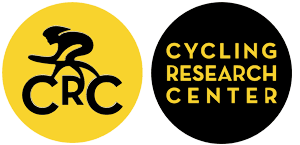Tour de Physiology: The Exceptional Power Outputs and V̇O₂ of Climbing in the Tour de France
DOI:
https://doi.org/10.28985/1425.jsc.15Keywords:
Cycling, Oxygen Consumption, Critical PowerAbstract
The Tour de France stands as perhaps the most demanding endurance competition in the world, requiring athletes to sustain exceptional physiological performance over three weeks of racing. Central to success in this event is a remarkably high maximal oxygen uptake (V̇O₂max). The 2024 and 2025 Tour de France showcased unprecedented climbing performances, with new records set on iconic ascents. This brief report analyzes the physiological demands of these performances by estimating the V̇O₂ and power output required during six decisive climbs (Plateau de Beille, Isola 2000, Col de la Couillole, Hautacam, Peyragudes, Mont Ventoux) by the race winner, Tadej Pogačar. Using publicly available climb data, rider anthropometrics, and validated mechanical models of cycling power output, results indicate estimated mean power outputs of 442 ± 15 W and corresponding mean oxygen consumptions of 80 ± 3 mL·kg⁻¹·min⁻¹ sustained over ~40 min. Extrapolating from these efforts and known relationships between critical power and V̇O₂max suggests that Pogačar’s V̇O₂max during the race likely exceeded 90 mL·kg⁻¹·min⁻¹. These findings underscore the extraordinary aerobic capacity required to achieve record-breaking performances in Grand Tour cycling. They also highlight how ongoing improvements in training, equipment, and rider physiology continue to push the limits of human endurance performance to the enjoyment of the spectators.
Downloads
References
Attia, P. (2024). 318 - The Meteoric Rise of Tadej Pogačar: From Prodigy to Cycling Legend. https://www.youtube.com/watch?v=m9yjbJJBjHU
Barnaby, G., Yon, J., & Burgess, S. (2021). Mapping whole-event drive losses: studying the impact of race profile and rider input on bicycle transmission efficiency. Journal of Science and Cycling, 10(2). https://www.jsc-journal.com/index.php/JSC/article/view/664
Bell, P. G., Furber, M. J., KA, V. A. N. S., Antón-Solanas, A., & Swart, J. (2017). The Physiological Profile of a Multiple Tour de France Winning Cyclist. Med Sci Sports Exerc, 49(1), 115-123. doi: 10.1249/mss.0000000000001068
Bierman, J. (2024). Road Bike Tire Test: Continental Grand Prix 5000 S TR 30. Retrieved 13.06. from https://www.bicyclerollingresistance.com/road-bike-reviews/continental-grand-prix-5000-s-tr-30
Clark, I. E., Vanhatalo, A., Bailey, S. J., Wylie, L. J., Kirby, B. S., Wilkins, B. W., & Jones, A. M. (2018). Effects of Two Hours of Heavy-Intensity Exercise on the Power-Duration Relationship. Med Sci Sports Exerc, 50(8), 1658-1668. doi: 10.1249/mss.0000000000001601
Coyle, E. F. (2005). Improved muscular efficiency displayed as Tour de France champion matures. J Appl Physiol (1985), 98(6), 2191-2196. doi: 10.1152/japplphysiol.00216.2005
Emirates, U. T. (2025). Tadej Pogačar. Retrieved 13.06. from https://www.uaeteamemirates.com/rider/tadej-pogacar/
Faria, E. W., Parker, D. L., & Faria, I. E. (2005). The science of cycling: factors affecting performance - part 2. Sports Med, 35(4), 313-337. doi: 10.2165/00007256-200535040-00003
Heil, D. P. (2005). Body size as a determinant of the 1-h cycling record at sea level and altitude. Eur J Appl Physiol, 93(5-6), 547-554. doi: 10.1007/s00421-004-1256-5
Hopker, J. G., O'Grady, C., & Pageaux, B. (2017). Prolonged constant load cycling exercise is associated with reduced gross efficiency and increased muscle oxygen uptake. Scand J Med Sci Sports, 27(4), 408-417. doi: 10.1111/sms.12673
Jones, A. M., Burnley, M., Black, M. I., Poole, D. C., & Vanhatalo, A. (2019). The maximal metabolic steady state: redefining the 'gold standard'. Physiol Rep, 7(10), e14098. doi: 10.14814/phy2.14098
Lamberts, R. P., van Vleuten, A., Dumoulin, T., Delahaije, L., & van Erp, T. (2024). Racing Demands for Winning a Grand Tour: Differences and Similarities Between a Female and a Male Winner. Int J Sports Physiol Perform, 19(11), 1209-1217. doi: 10.1123/ijspp.2023-0476
Leo, P., Simon, D., Hovorka, M., Lawley, J., & Mujika, I. (2022). Elite versus non-elite cyclist - Stepping up to the international/elite ranks from U23 cycling. J Sports Sci, 40(16), 1874-1884. doi: 10.1080/02640414.2022.2117394
Lucia, A., Hoyos, J., & Chicharro, J. L. (2001). Physiology of professional road cycling. Sports Med, 31(5), 325-337. doi: 10.2165/00007256-200131050-00004
Péronnet, F., & Massicotte, D. (1991). Table of nonprotein respiratory quotient: an update. Can J Sport Sci, 16(1), 23-29.
Rønnestad, B. R., Hansen, J., Stensløkken, L., Joyner, M. J., & Lundby, C. (2019). Case Studies in Physiology: Temporal changes in determinants of aerobic performance in individual going from alpine skier to world junior champion time trial cyclist. J Appl Physiol (1985), 127(2), 306-311. doi: 10.1152/japplphysiol.00798.2018
Salas-Montoro, J. A., Valdivia-Fernández, I., Rozas, A., Reyes-Sánchez, J. M., Zabala, M., & Pérez-Díaz, J. J. (2025). Do Power Meter Data Depend on the Device on Which They Are Collected? Comparison of Eleven Different Recordings. Sensors (Basel), 25(2). doi: 10.3390/s25020295
Santalla, A., Earnest, C. P., Marroyo, J. A., & Lucia, A. (2012). The Tour de France: an updated physiological review. Int J Sports Physiol Perform, 7(3), 200-209. doi: 10.1123/ijspp.7.3.200
Sidossis, L. S., Horowitz, J. F., & Coyle, E. F. (1992). Load and velocity of contraction influence gross and delta mechanical efficiency. Int J Sports Med, 13(5), 407-411. doi: 10.1055/s-2007-1021289
Strava. (2025a). Col de la Couillole. Retrieved 13.06. from https://www.strava.com/segments/36908823
Strava. (2025b). Hautacam. Retrieved 05.11. from https://www.strava.com/segments/7731042
Strava. (2025c). Isola Village à Isola 2000. Retrieved 13.06. from https://www.strava.com/segments/4238049
Strava. (2025d). Mont Ventoux. Retrieved 05.11. from https://www.strava.com/segments/38095101
Strava. (2025e). Peyragudes. Retrieved 05.11. from https://www.strava.com/segments/31441220
Strava. (2025f). Plateau de Beille. Retrieved 13.06. from https://www.strava.com/segments/665568
Tech, I. P. (2025). Derek Gee. Retrieved 13.06. from https://israelpremiertech.com/rider/derek-gee/
van Druenen, T., & Blocken, B. (2021). Aerodynamic analysis of uphill drafting in cycling. Sports Engineering, 24(1), 10. doi: 10.1007/s12283-021-00345-2
Published
How to Cite
Issue
Section
Copyright (c) 2025 Journal of Science and Cycling

This work is licensed under a Creative Commons Attribution-NonCommercial-NoDerivatives 4.0 International License.
Authors contributing to Journal of Science and Cycling agree to publish their articles under a Creative Commons CC BY-NC-ND license, allowing third parties to copy and redistribute the material in any medium or format, and to remix, transform, and build upon the material, for any purpose, even commercially, under the condition that appropriate credit is given, that a link to the license is provided, and that you indicate if changes were made. You may do so in any reasonable manner, but not in any way that suggests the licensor endorses you or your use.
Authors retain copyright of their work, with first publication rights granted to Cycling Research Center.






